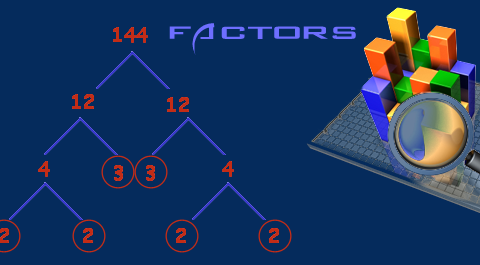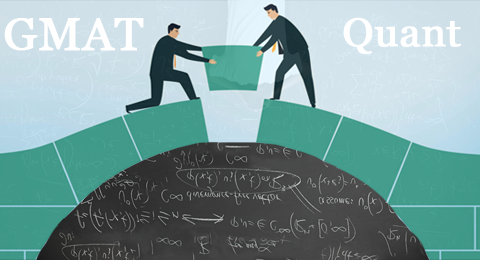- Have any questions?
- +971 509267126
- +971 551207626
- enquiry@optioneducation.ae
The 80/20 rule says that 80% of your output comes from 20% of the effort. I am a firm believer in this amazing rule and, hence, would like to discuss something that can make the biggest difference to your GMAT score. As you might already know, there are 2 types of questions in the quantitative section of GMAT – problem-solving and data sufficiency. While the first – problem solving – is part of every standardized test, the second is probably unique to the GMAT. And I believe that familiarizing yourself with the nuances of this question type can dramatically improve your quant score. Out of the 37 quant questions, around 15 are based on data sufficiency. So, let’s understand this peculiar question type.
The data sufficiency problem consists of a question and two statements, labeled (1) and (2), in which certain data are given. You have to decide whether the data in the statements are sufficient to answer the question. Using the data given in the statements, plus your knowledge of mathematics and everyday facts (such as the number of days in July or the meaning of the word counterclockwise), you must indicate whether:
- Statement (1) ALONE is sufficient, but statement (2) alone is not sufficient to answer the question asked.
- Statement (2) ALONE is sufficient, but statement (1) alone is not sufficient to answer the question asked.
- BOTH statements (1) and (2) TOGETHER are sufficient to answer the question asked, but NEITHER statement ALONE is sufficient to answer the question.
- EACH statement ALONE is sufficient to answer the question asked.
- Statements (1) and (2) TOGETHER are NOT sufficient to answer the question, and additional data specific to the problem are needed.
Sufficiency here means that you should get a unique answer. For example, if the question is “find x” and the first statement is |x| = 2, then the first statement alone is insufficient since it does not give a unique value of x (x could be ‘2’ or ‘-2’).
Now, let us look at four tips to help solve this question type.
Tip #1 LEARN THE ANSWER CHOICES.
Since the choices in this question type remain the same, it would help you save some precious time if you learn them beforehand and do not have to refer to the directions repeatedly.
Tip #2 KEEP THE DECISION TREE IN MIND.
Tip #3 DON’T MISTAKE A ‘NO’ FOR ‘NOT SUFFICIENT’
Let’s say the question asks, “Is x>5. “
(1) x2 + 3x + 2 =0
(2) x2 + 5x + 6 =0
The first equation gives the value of x as -1 and -2. The second equation gives x as -2 and -3. Since -2 is common to both, x must equal -2. So we get the answer that x is not greater than 5. Although we got the answer as NO, what is important is that we were able to get a definitive answer. Hence, the answer is C, not E.
Tip #4 DON’T ASSUME ANYTHING WHICH IS NOT GIVEN
For example, the question asks, “How many integers are between x and y?”
(1) y = x+6
(2) x< y
Since the question mentions integers, you might be tempted to assume that x and y are integers and get ‘A’ as the answer since if x and y are both integers, we have 5 integers between x and y. But if x and y are not integers, we get 6 between them, and hence, the correct answer would be ‘E.’ So don’t assume anything that is not mentioned in the question. Since we deal with positive integers daily, we tend to think of them first. But make sure you have considered all kinds of negative, fractions, and irrational numbers before marking the answer.
As you can see, data sufficiency questions can be very tricky, with each step a potential trap. At Option, we make sure you are exposed to each of these traps during your preparation so that you can avoid them during the GMAT.
Join our Classes for comprehensive and personalized guidance tailored to your academic goals. Classes for Digital Sat, ACT, AP, LNAT, UCAT.
- Filter by
- Categories
- Tags
- Authors
- Show all
- All
- ACT
- ACT Essay
- ACT Exam
- ACT Experts
- ACT Prep
- ACT Preparation
- ACT Test
- ACT Test Takers
- ACT Training
- ACT Writing Section
- Algebra
- AP
- AP AB
- AP BIOLOGY EXAM
- AP Calculus AB
- AP Course Prep
- AP Dubai
- AP Exam Test
- AP Test
- c-trap
- Chemistry Subject SAT
- Class Schedules
- Concepts
- COVID 19
- Digital SAT
- DIGITALSAT
- DSAT
- EVEN
- Factors
- GEOMETRY
- gmat
- GMAT MATH
- GMAT Prep
- GMAT Preparation
- gmat quant
- GMAT Scores
- GMAT Section
- gmat test
- GMAT VERBAL
- GMAT Verbal Section
- GRE
- GRE Prep
- GRE Test
- INSEAD
- Junior SAT
- LNAT
- Math
- mathematics
- MBA
- MBA Program
- Multiples
- New SAT
- NEW SAT ESSAY
- Number Properties
- NUMBERS
- Objectives of AP
- ODD
- Option
- QS Event
- Remainders
- SAT
- SAT Biology
- SAT BIOLOGY E/M
- SAT CANCELLATION
- SAT Chemistry Subject Test
- SAT Dubai
- SAT Essay
- SAT Exam
- SAT Grammer
- SAT II
- SAT Language Section
- SAT MATH
- SAT Prep
- SAT READING SECTION
- SAT Subject
- SAT Subject Test
- SAT Test
- SAT Test Takers
- SAT Trainers
- SAT Writing
- SAT Writing Section
- Skills
- Starting Classes
- Subject SAT
- Subject SAT Math Level 2
- Subject Test
- Test Prep
- Test Takers
- Training Institute
- Triangles









